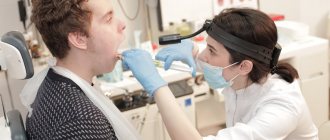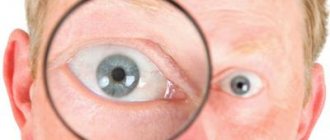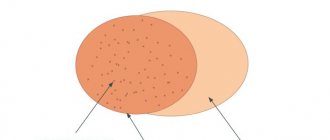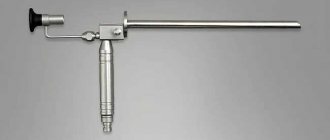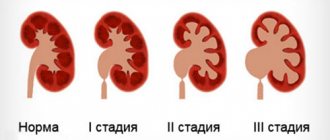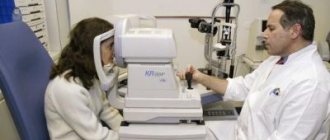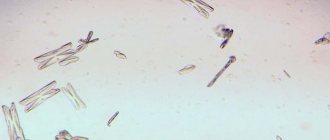Introduction: stress factors in society and what does massage have to do with it?
We live in a time when the direct expression of emotions is under an unspoken ban.
You can’t be “negative” - get angry, show fear, be sad, but you need to smile and enjoy life, even if your soul is sad. With our jaws clenched, every morning we put on the socially approved mask of a positive, successful person and, forward and singing, we go about our business. There we learn to keep everything to ourselves, for fear of being rejected by society. Everyone knows the expression “gritting your teeth”, i.e. overcome obstacles and adversity by showing endurance, self-control, restraining negative emotions to achieve the goal. Usually this expression is used in a situation where you need to accomplish a feat, but it so happens that leaving the house “into the world” has become this very feat for many of us. We need to “compact” the existing negative emotions and put on a smile. We pretend, sometimes even with the closest people - and this is our “feat”.
Our pretense is the main, almost unnoticed cause of many mental and somatic disorders. By holding back negative emotions and simulating positive ones, we experience stress. To “pull off” this “scam” of ours, a lot of mental strength is spent, and fatigue accumulates. In addition, those negative emotions that we hold back not only poison us, but also accumulate. After all, every day we can encounter something unpleasant and simply “swallow” it without reacting.
Years go by, and we save everything. And at the same time, our sores accumulate, as a reaction to constant stress, which we no longer even notice. We become tired, life becomes less interesting, we no longer notice how we do not experience positive emotions at all. It hurts here and there. First the back, then the neck. But the jaws are somehow bothered, they are clenched all the time, unpleasantly tense. We are getting old, many will think. But what is really happening to us? Yes, and what does massage have to do with it? Read more about this further.
Preventive measures and prognosis
For the purpose of prevention, experts recommend a careful approach to the health of the oral cavity and the body as a whole. Since one of the reasons for the manifestation of this unpleasant symptom is dental diseases, to prevent their development it is necessary to provide competent and systematic oral care. Remember to regularly brush your teeth, rinse your mouth after eating, floss, and visit the dentist at least twice a year. Try to eliminate factors and circumstances that could lead to overstrain of the facial muscles, and if the first suspicious symptoms appear, immediately consult a doctor.
Regular brushing of teeth and tongue will help avoid problems.
If the cause of all troubles lies in a dental disease, inflammation of the ENT organs, or is of a neuralgic nature, then after eliminating the original source of the problem, the symptom will disappear by itself. When trismus results from injury, the patient's condition is normalized through various exercises aimed at restoring the muscles. In many ways, the prognosis will depend on how advanced the causative pathology is.
- Grinin V.M., Adilkhanyan V.A. Clinical and radiological assessment of the pathology of the temporomandibular joint in rheumatic diseases, 2009.
Tensions, muscle spasms and stress
Our attempts to hide our true state of mind from strangers, those closest to us, and even from ourselves, have led us to a state of chronic stress. We know that our psyche affects our body - when we tense up emotionally, our muscles also tense up, this is a protective reaction of our body. Constant stress leads to the fact that our muscles tense into a kind of “muscular shell,” as Wilhelm Reich aptly noted.
Reich, being an Austrian psychiatrist and student of Z. Freud, was the first to draw attention to muscle tension in people with mental disorders and diseases. Muscle tension holds back negative emotions - not always negative, sometimes positive, but frighteningly strong - and if you relax the muscles, you can throw out negative emotions and get rid of them and muscle tension forever.
But a constricting muscular shell and loss of interest in life are only half the story. Chronic muscle tension causes disruption of metabolic processes in tissues and organs in places where these muscles are tense. For example, chronic tension in the muscles of the throat and jaw can lead to slower blood circulation and lymph flow in this area and increase the chances of developing acute respiratory diseases. Not to mention that nervous tension can lead to spasms of the smooth muscles of the stomach and subsequently to peptic ulcers.
As we can see, a seemingly simple practice of masking one’s emotions can lead to serious illnesses. The topic is quite broad, and there may be more articles covering it, but in this article we will look at the problem of tension and spasms in the jaw muscles.
What is bruxism
Bruxism, or uncontrollable teeth grinding, most often occurs during sleep. According to dentists, the teeth of the upper and lower jaws at rest should not touch each other except for episodes of eating.
This also includes strong clenching of the jaws as a result of spasms of the masticatory muscles (clanchus), including during the day (bruxomania). If we can still somehow cope with daytime grinding or compression by controlling it (although not always), then at night our “controller” mind turns off.
With the harmful bruxing process, the effect on the teeth can be called destructive. They wear out and loosen faster, the enamel becomes thinner, sensitivity increases, the bite is disrupted, resulting in cracks and chips appearing on the teeth. Gums also suffer, there is a risk of inflammation and the service life of installed fillings, implants and dentures is reduced.
Often, a patient with bruxism will wake up with tightly clenched teeth and a feeling of pain in the jaw, teeth, or facial muscles. Morning headaches and dizziness, ringing in the ears, pain in various parts of the spine, daytime drowsiness and a feeling of lack of sleep are also likely.
Why your jaw gets tense and what to do about it
There may be several reasons for spasm and discomfort in the jaw area. Yes, it's not always stress. The cause may also be injuries, infectious diseases and inflammation of the trigeminal nerve (you can catch a cold). Therefore, before you bravely fight stress, you need to consult with your doctor and find out whether these factors could be causing the problem.
Well, now, if you have already ruled out these reasons, and the problem has not been resolved, we will solve it in another way.
Symptoms of TMJ dysfunction
In 1934, the American otolaryngologist D. Kosten first described the symptoms that occur with TMJ dysfunction, and can also be manifestations of arthritis or arthrosis of this joint:
- restriction of mouth opening when talking and eating;
- the sound phenomenon of a click when opening the mouth;
- burning pain in the throat and root of the tongue;
- pain in the jaw, ear, eye, neck;
- slight asymmetry of the face due to uncoordinated work of the masticatory muscles and hypertrophy of muscle tissue on the side of excess load;
- noise in the ear/tinnitus and hearing loss;
- dizziness.
Classic Costen's syndrome is uncommon in clinical practice, but some of the symptoms of this syndrome can be misleading to doctors and patients. Often a person goes from an otolaryngologist to a neurologist, wanting to receive adequate help, he is given various examinations, given many diagnoses, and therapy is unreasonably prescribed, although the main problem that requires correction is TMJ dysfunction.
How massage can help relieve tense jaws
Massage is the first thing that will help us get rid of an unpleasant symptom. When doing massage, we can use two methods: classic massage on the ANS area (temporomandibular joint) and impact on the Xia Guan point.
With a classic massage, it is important to also massage the neck muscles; you can read about how to do this in this article: “Massage for overwork: benefits and effectiveness.” The duration of the massage is from 5 to 15 minutes. Techniques of stroking, rubbing, kneading and vibration will be used. For more information about massage techniques, see here: “Basic massage techniques with hands and using massagers.” You must first warm your face with a compress.
Stroking – planar and pincer-shaped stroking:
- From the midline along the lower edge of the jaw to the behind-the-ear areas,
- From the wings of the nose to the earlobe,
- From the corners of the mouth to the ears.
Rubbing – circular, pincer-shaped, shading, straight, spiral.
Kneading – pressing, stretching, sliding.
Vibration - puncturing, patting.
Alternate all movements with stroking.
Impact on the xia-guan point
Acupressure massage is no less effective and, due to its simplicity, is accessible to everyone. We need to find the point that is responsible for the tone of the masticatory muscle (in fact, it is responsible not only for the tone of the muscle, but now it is interesting for this). The xia-guan point is located in the depression formed by the lower edge of the zygomatic arch and the condylar process of the mandible. Opening and closing your mouth will help you detect it. When the mouth opens, the depth of the cavity decreases, and when it closes, it increases. The point should be affected by pressing with the pads and thumbs and pressing with circular movements. After the massage you will feel your jaw relaxing. You can also perform acupressure using Su Jok massagers.
Location of the xia-guan point
So, with the help of massage we can get the desired result, but it is important to carry out a full course of massage to consolidate the result.
Massage will help us cope with jaw tension when symptoms worsen, but will solve the problem completely. If the cause is chronic stress and unexpressed emotions, then the problem will return again and again. To get rid of chronic stress, you need to start working with emotions.
How to diagnose TMJ dysfunction?
Diagnosing TMJ dysfunction is not difficult and can be done in a few minutes. Here are the main signs of joint dysfunction:
- Clicking sound when opening the mouth. There is a disc in the joint that provides variability of movement, “smoothing” angles and asymmetrical traction that occurs when the masticatory muscles contract. If a click occurs when opening the mouth, it means that the head of the lower jaw jumps off the disk and leaves the functional comfort zone, which under certain conditions can lead to a breakdown in adaptive resources and the development of inflammatory and degenerative changes.
- Limitation of mouth opening. Normally, a person should freely open his mouth to the width of 3 fingers of his non-dominant hand (for right-handed people this will be the left hand) as shown in the picture:
- Pain on palpation of the masticatory muscles. Available for superficial palpation are the temporal muscles and the masticatory muscles themselves. The pain occurs due to chronic spasm of these muscles. To palpate the temporal muscles, place the pads of the index and middle fingers of both hands in the temporal region and clench your teeth. When you squeeze your jaw, the muscle fibers will be contoured under your fingers. To palpate the chewing muscles themselves, the fingers must be placed in the area of the corners of the lower jaw and also squeeze the teeth to make sure that the muscles are tense under the fingers. If finger pressure provokes pain both during contraction and at rest, then the muscles are in increased tone.
- Pain in the TMJ area. To palpate the heads of the lower jaw, you need to place your fingers in front of the tragus of the auricle on the left and right, then open your mouth to feel the sliding of the lower jaw under your fingers and lightly press on the soft tissues:
We can talk about reliable TMJ dysfunction if there is a click and restriction of movement when opening the mouth, pain on palpation of the masticatory muscles and the joint itself.
The diagnosis can be confirmed by performing an MRI of the temporomandibular joint.
How psychology can help you cope with jaw muscle tension
As we found out above, clenched jaws are an attempt to hold back crying, screaming or anger. As long as we hold back these emotions, the jaw will strain to keep it all inside. We need to gain strength and let ourselves go, let them spill out. To throw out emotions, that is, to experience, feel them, surrender to them and see how they lose their power and disappear. Special exercises will help us with this. The first of them is imitation of crying. By imitating crying, we engage exactly those muscles that restrain it and thereby actualize them. Second exercise, grimacing. By grimacing, we also activate the “switched off” muscles involved in expressing emotions. These two simple exercises will help us break through the muscular shell and get rid of the negative emotions that it holds back, and as a result we will eliminate the cause of a tense jaw.
If you find it difficult to process your emotions, then you can work through them with your psychologist, which will speed up the process.
There are also methods for getting rid of tense jaw muscles and the stress that causes this tension, for example, the RESET method by Philip Rafferty, but this will be a separate article.

